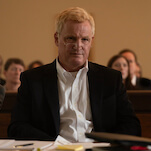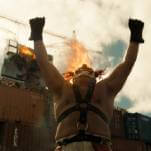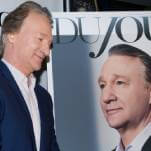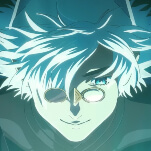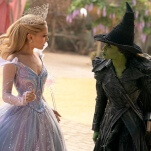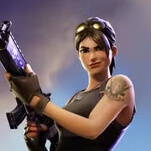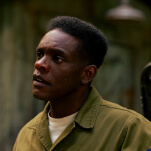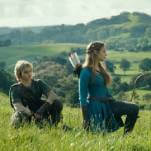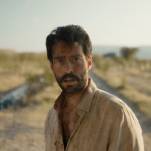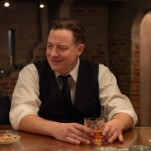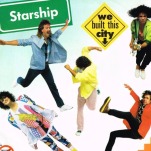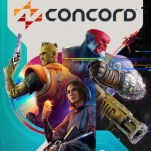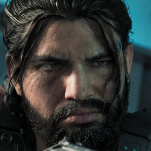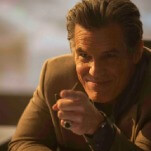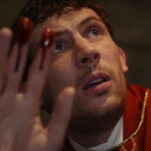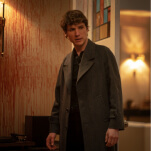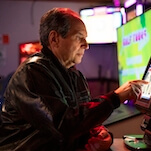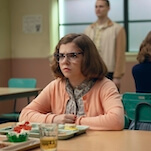“We are trying (perhaps vainly?) to reach a slightly older, more sophisticated group,” Marvel Comics editor-in-chief Stan Lee wrote in a private letter in 1961. The first issue of The Fantastic Four had just come out; prior to that, Lee spent 20 years as an editor at Marvel, previously known as Timely, a publisher of pulp of all stripes. By the early ’60s, comic-book sales were in a slump, and Marvel’s random assortment of unrelated monster and romance titles couldn’t compete with the industry titan, DC Comics, home of Superman and Batman. The launch of The Fantastic Four was a Hail Mary; with nothing to lose, Lee enlisted his creative partner, artist Jack Kirby, and turned the superhero genre on its head. Although far from being as sophisticated as Lee might have imagined at the time, FF portrayed a superhero team unlike anything seen before: bickering, angst-ridden, and at times even morally ambiguous.
But the biggest innovation was just around the corner. As Lee, Kirby, Steve Ditko and others quickly rolled out titles such as The Amazing Spider-Man, The Avengers, and The X-Men in the wake of FF’s surprise success, these innovative characters began to interact and cross over with each other in an unprecedented way. Soon, this collective mythos became, in essence, a mega-character of its own: the Marvel Universe—or, as Sean Howe calls it in his superb book Marvel Comics: The Untold Story, “the most intricate fictional narrative in the history of the world.”
There are inherent handicaps to presenting the history of Marvel Comics: Anyone interested in writing such a book pretty much has to be a fan, yet fandom has had a tendency to color perception and foster hyperbole. But when Howe issues grandiose statements about the cosmological scope and sprawl of the Marvel Universe, he backs it up with cultural context and prose that zings. Even better, he balances his obvious love and respect for Marvel’s characters—and their creators—with a cold, hard look at an industry that has often done everything in its power to thwart the things that built it: imagination, wonder, artistry, and the fans’ good faith.
Lee is at the crux of those conflicts. The genially towering figure at the heart and helm of Marvel during its ascent to ubiquity in the ’60s receives an in-depth, balanced profile. Howe isn’t afraid to show Lee as one of the most gifted creators in the history of comics—and a deadbeat dad to his creations when the chips were down. As Howe traces the rise and fall of Marvel’s fortunes throughout the ’70s and ’80s, he reveals Lee’s long game: to use Hollywood as a way to shore up Marvel’s perpetually shaky bottom line. Howe’s research is astounding; interviews with dozens of artists, writers, and editors in the fabled Marvel Bullpen over the decades enrich The Untold Story with a wealth of anecdotes and revelations. Mickey Spillane, Hugh Hefner, Mario Puzo, and Federico Fellini are among the many figures given walk-ons; Lee is portrayed as an erratic, indefatigable leader whose insistence upon maintaining the Marvel Method of comics-craft in the ’60s spurred him to jump on couches in the company’s offices to strike poses and perspectives for his artists to use.
Lee’s relationship with Kirby, though, is The Untold Story’s central narrative. Raised on Shakespeare and street gangs, the rough-and-tumble Kirby—one of comics’ greatest stylists and visionaries—becomes a victim of Marvel’s capriciousness and Lee’s neglect, causing a rift between the two that rivals the clashes of their superheroic creations. In one particularly heartbreaking passage, the long-estranged duo are reunited via phone during a call-in talk show, with the two of them acidly airing grievances while fruitlessly trying to renew their friendship. Sadly, Kirby is far from the only creator Marvel gave short shrift; much of The Untold Story dwells on the struggle for creators’ rights throughout the decades and its impact on the industry as a whole, especially during the ’80s tenure of editor-in-chief Jim Shooter, a divisive figure who was so loathed by much of Marvel’s staff that they burned him in effigy at a party after his firing in 1987, copies of his failed, hubristic New Universe line stuffed into the dummy’s coat pockets.
The bitterness that settles into Marvel ossifies in the early ’90s, after a slew of popular young writer-artists—including Todd McFarlane, Jim Lee, and Rob Liefeld—defect from the company to form their own publishing house, Image. That cynicism leads to a rapid deterioration in fiscal responsibility and artistic standards throughout the decade, a tailspin Marvel was lucky to have pulled out of—just in time for the company’s renaissance in the new millennium, with the blockbusting success of the film franchise Lee had been trying to establish since the ’60s. It’s an epic tale, and Howe more than does it justice. From reverent, insightfully, gorgeously written analyses of the early Marvel heroes to scathing screeds against the company’s post-McFarlane era, he combines cultural criticism, industry wonkery, and unbridled fanboyism with verve and authority. While Howe allows a few nominal omissions—he doesn’t mention the recent Marvel Digital Comics Unlimited, and rushes through too much of Marvel’s creative renaissance in the ’00s—he covers the bases exhaustively, making his views and passions clear while keeping a steady eye on the big picture. The Untold Story abounds with the same strengths that made Marvel’s heroes so indelible in the first place: wit, drama, courage, smarts, and just the right touch of majesty.

